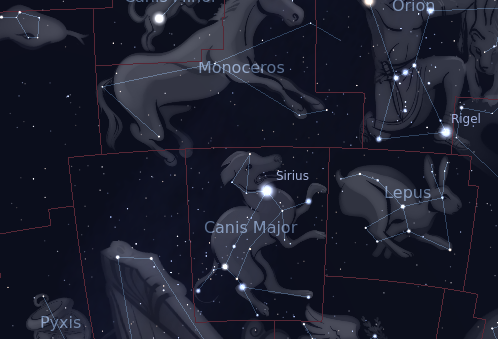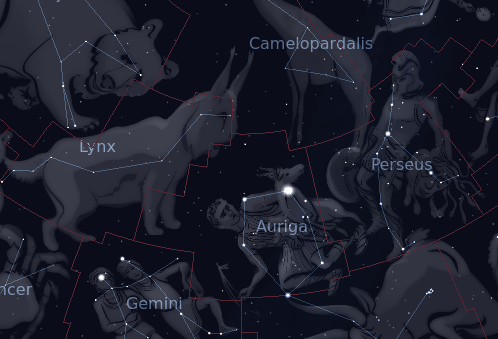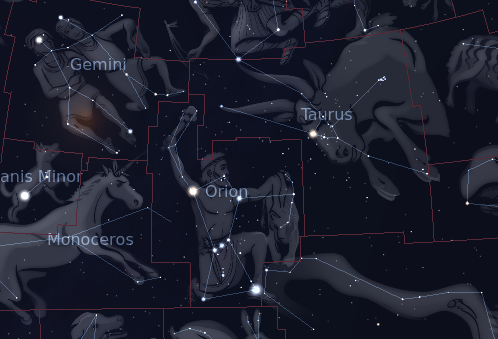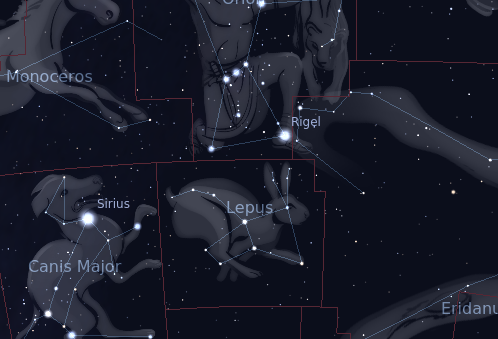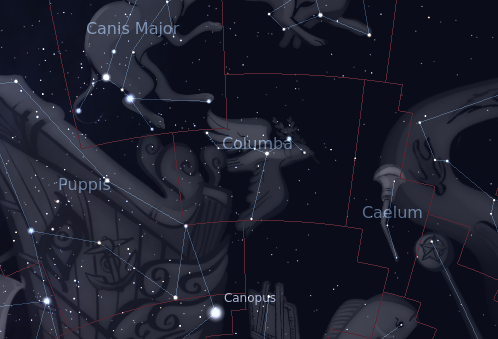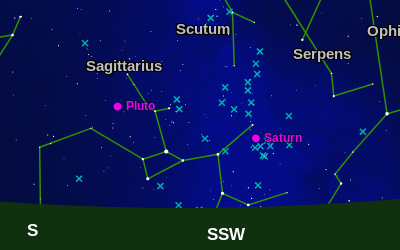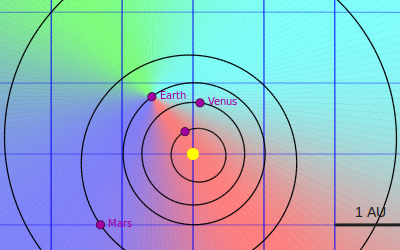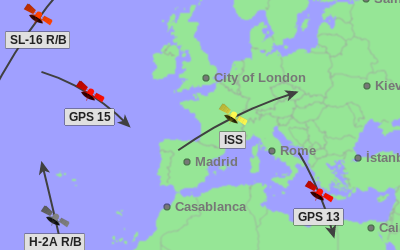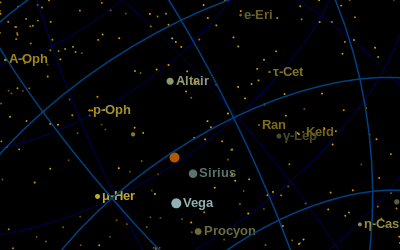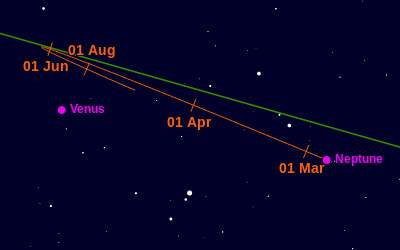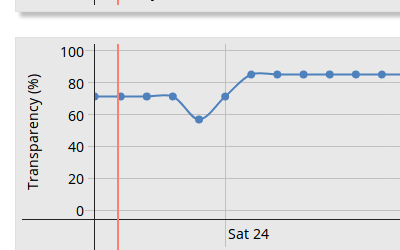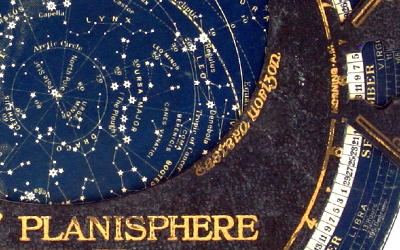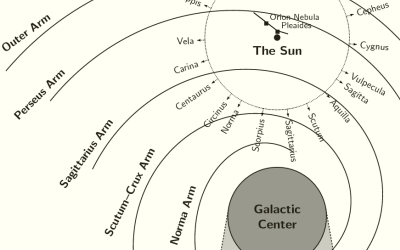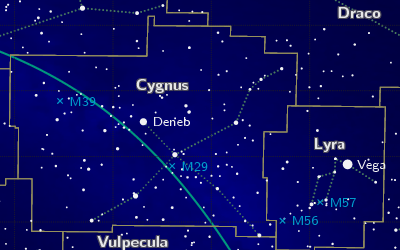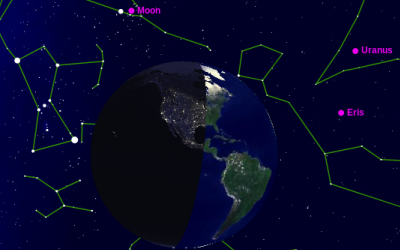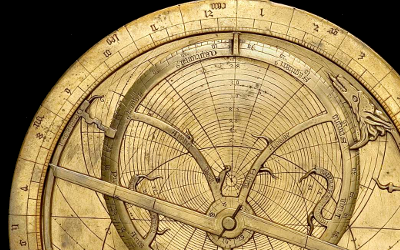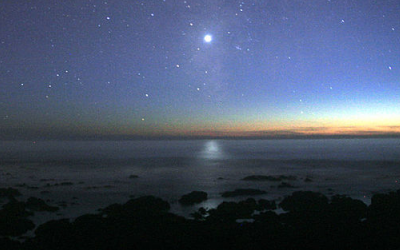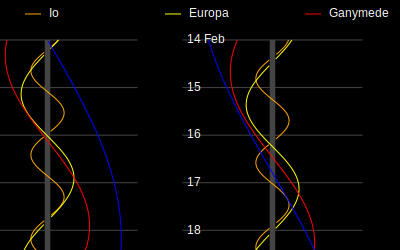|
From the Meteor Showers feed Mon, 22 Dec 2025 |
|
Close approach of the Moon and Saturn From the Appulses feed Fri, 26 Dec 2025 16:08 PST |
|
From the Moon feed Sat, 27 Dec 2025 11:10 PST |
|
The cluster NGC 2232 is well placed From the Deep Sky feed Sun, 28 Dec 2025 |
|
The Rosette Nebula is well placed From the Deep Sky feed Mon, 29 Dec 2025 |
|
From the Meteor Showers feed Sat, 03 Jan 2026 |
|
The greater dog; in Greek mythology, a hunting dog belonging to Orion, depicted pursuing the hare Lepus. |
|
|
The charioteer; in Greek mythology, Erichthonius, son of Vulcan, the first person to attach four horses to a chariot. |
|
|
The hunter; associated in Greek mythology with a son of Poseidon, but associated by the Sumerians with their great hero Gilgamesh. |
|
|
The hare; often depicted being chased by Orion and his two dogs. |
|
|
The dove; introduced by Plancius in 1592. In Biblical history, said to be the dove of Noah. |
|
